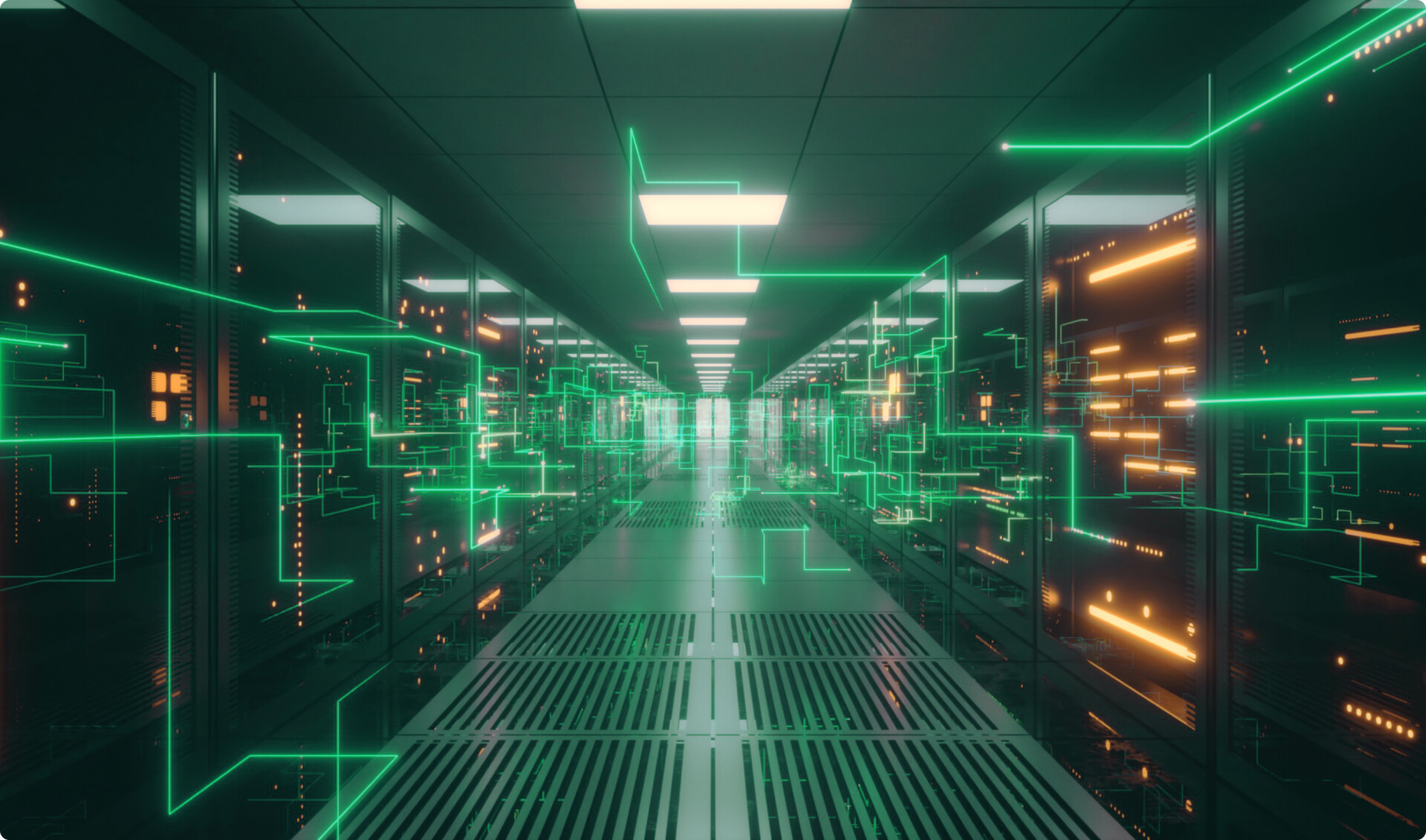A data center is a physical location where companies’ data and infrastructure are stored and processed. A data center is equipped with advanced technology, which ensures that the data is safe and available at all times.
The basic infrastructure in a data center includes the necessary services to be able to operate and maintain servers and network equipment. Among other things, access control, power supply, cooling, and access to the internet or ethernet are included. The infrastructure is usually designed with redundancy and emergency-based solutions to ensure availability 24/7.
A data center varies in size, from smaller premises with only a few racks (data cabinets), to large facilities with thousands of racks and enormous amounts of data processing and storage capacity.
The purpose of a data center is to ensure that the data is accessible and secure, so that businesses can store, process and distribute their data in an efficient manner. In addition, it provides economic and environmentally friendly advantages when several companies co-locate their servers in one physical location.
What are the types of data centers?
There are several types of data centers. Mainly, we distinguish between corporate (in-house) data centers and commercial data centers.
Corporate data centers cover the needs of businesses, or their customers, for data processing and storage in-house. The purpose is to ensure that the business has a reliable solution for storing, processing and distributing data internally within the business. Often these are located at a head office or in the basement of one of the company facilities, where they themselves are responsible for running the data center.
This is often more expensive, as the business itself is responsible for establishing and operating the data center. In addition, there is a need for internal staff to ensure that the data is available at all times.
Commercial data centers are companies who offer data centers services and all that comes along with it. This typically includes power supply, cooling and other necessary infrastructure that is required to operate and maintain servers and network equipment. There are different types of commercial data centers, including colocation, hyperscale and edge.
Colocation
A colocation data center is a data center where customers co-locate to achieve economic and sustainable operational benefits. It is the data center supplier that is responsible for operating and maintaining the equipment, including through electricity, cooling and security.
We at GreenBox™ offer colocation services to our customers!
Read more about colocation in the article below:
What is a colocation data center?
HPC
HPC stands for “High Performance Computing”. An HPC data center is specifically designed to handle an enormous power and data capacity. An example of HPC is “supercomputers” which are often used in simulations and research.
Read more in the article about HPC:
What is an HPC data center?
Hyperscale
Hyperscale data centers are huge, scalable facilities offered by large technology companies, such as Microsoft, Google and Amazon. The data centers are specially designed to handle large amounts of data and traffic from cloud and online services.
Read more about hyperscale data centers in the link below:
What is a hyperscale data center?
Edge
An edge data center is a smaller data center that is located closer to the source of the data, such as an office building or shopping mall. The aim is for the processing and storage of data to take place closer to the end user, as it provides a faster response and lower latency in the data transfer. This is particularly advantageous when there is a need for fast access to large amounts of data, such as video streaming.
Edge data centers are useful as they reduce the load on the large, central data centers. They also increase the availability of data and services in areas that are out of reach of the central data centers.
Summary
There are several ways companies can store, process and secure their data. The main purpose of a data center is that the data is available at all times, so that the company is not affected if something were to happen to the servers or other local conditions such as power outages. Businesses that are completely dependent on their data, such as banks and IT companies, will be strongly affected by downtime. That is why an increasing number of companies are moving their servers out to commercial providers (such as GreenBox™) who secure their data for them.
If you have any questions related to data center services, don’t hesitate to contact us at GreenBox™!
